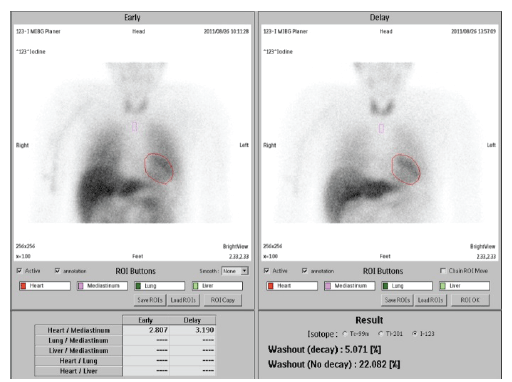
 |
| Figure 3: SPECT, surface mapping, and Z-score images. A fully automated three-dimensional stereotactic surface projection technique (3D-SSP) was used to analyze SPECT images. In brief, each SPECT image set was co-registered and warped to the common stereotactic coordinate system. Subsequently, gray matter perfusion was extracted to predefine surface pixels on a pixel-bypixel basis. The extent and significance of perfusion reduction in each subject and group were assessed on a Z-score map. The Zscore was defined as (normal mean – patient value)/(normal SD). Z-score images were normalized by cerebellum perfusion. Color coding represents Z-score compared with age-matched normal controls. Red represents more significant perfusion reduction. There is low perfusion in bilateral occipital cortices, in particular in the medial aspects seen on surface mapping image (middle row) and Z-score image (lower row). Note: Right lateral (RT.LAT), left lateral (LT.LAT), right medial (RT.MED) and left medial (LT.MED) views of brain. |